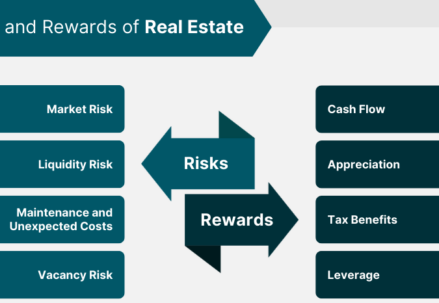For quite some time, professionals in the realm of commercial real estate (CRE) have acknowledged deferred maintenance as a prominent catalyst for the depreciation of value within the sector. Furthermore, it stands out as an immensely expensive peril that investors and owners of commercial real estate can encounter. Within the context of this piece, we delve into the perils associated with deferred maintenance while providing insights on strategies to circumvent them. As the timeless saying suggests, neglecting preparation sets the stage for failure. Vigilantly attending to the present can serve as a safeguard for your future endeavors in the realm of commercial real estate.
What is Deferred Maintenance?
Within the realm of commercial real estate, deferred maintenance refers to the act of postponing, neglecting, or delaying necessary repairs or replacements. This often arises due to various factors, such as financial limitations, insufficient cash flow, or a desire to cut costs.
Although certain instances of deferred maintenance might initially appear minor and inconspicuous, they have the potential to rapidly escalate into more substantial and expensive issues in the future. For instance, a seemingly small roof leak can quickly snowball into a significantly higher cost for repairs if not promptly addressed, potentially leading to more extensive complications.
Why does Deferred Maintenance Pose such a Grave Danger?
The perils of deferred maintenance are manifold for proprietors and investors in the commercial real estate sector. Primarily, it can result in substantial depreciation of property value. This occurs because prospective buyers factor in the expenses of necessary repairs and enhancements when evaluating a purchase price.
Furthermore, the decision to postpone regular maintenance entails higher long-term costs. For instance, allowing commercial HVAC systems to fall into disrepair reduces their efficiency, resulting in increased energy consumption for heating and cooling, ultimately translating to elevated utility expenses.
Critical repairs can also spawn health and safety risks. For example, a building with faulty electrical wiring becomes a potential fire hazard. Similarly, leaks in roofing or plumbing systems can lead to water damage and mold proliferation, endangering the health of occupants.
Deferred maintenance can also provoke code violations and legal entanglements. Failure to meet established codes could subject a property to substantial fines, particularly in certain municipalities. Moreover, it opens the door to potential lawsuits from tenants or neighbors if the deferred maintenance adversely affects them.
How Can Deferred Maintenance be Prevented?
To stave off the accumulation of maintenance tasks, adopting a proactive approach is paramount. Regularly inspecting the property and promptly addressing any concerns falls under the umbrella of preventive maintenance. By earmarking a budget dedicated to repairs and upkeep, the necessity to postpone vital work due to financial constraints can be circumvented.
Engaging the services of a proficient property management firm is a prudent move as well. A skilled manager brings with them a wealth of experience in handling maintenance matters, aiding in the formulation of a comprehensive plan for their prevention.
It’s crucial to recognize that the consequences of deferring maintenance encompass substantial value degradation, the emergence of further issues stemming from postponement, heightened operational expenses, health and safety risks, regulatory violations, and legal ramifications. Nonetheless, these can all be averted through a proactive approach involving timely repairs and replacements. Establishing a maintenance budget and enlisting the assistance of a professional property management company are additional measures that aid in steering clear of maintenance-related predicaments.
Example of Deferred Maintenance

Several prevalent instances of deferred maintenance frequently manifest in the domain of commercial real estate. These encompass:
- Roof leaks;
- Dysfunctional HVAC systems;
- Defective electrical wiring;
- Unsecured stair treads;
- Step cracks evident in brickwork;
- Problems with building facades;
- The proliferation of mold;
- Infestations by pests.
These cited cases represent merely a fraction of the concerns. The overarching problem with deferred maintenance lies in its propensity to expand in both magnitude and expense the more it is postponed.
| Issue | Description |
|---|---|
| Roof leaks | Unresolved leaks in the roofing structure that can lead to water damage and mold growth. |
| Dysfunctional HVAC systems | Neglected heating, ventilation, and air conditioning systems that result in inefficiency and increased costs. |
| Defective electrical wiring | Ignored issues with wiring that may pose fire hazards or operational disruptions. |
| Unsecured stair treads | Loose or unstable stair treads that can lead to safety hazards for occupants. |
| Step cracks in brickwork | Cracks in brick surfaces that may worsen over time, affecting structural integrity. |
| Problems with building facades | Deterioration or damage to building exteriors, impacting aesthetics and stability. |
| Proliferation of mold | Unattended moisture issues that lead to mold growth, endangering occupant health. |
| Infestations by pests | Neglected pest control resulting in infestations that can damage property and pose health risks. |
What are the Risks Linked to Deferred Maintenance?
Numerous perils and hazards are entwined with the act of deferring maintenance. These encompass:
- Diminished property value;
- Escalating operational expenses;
- Emergence of supplementary problems stemming from maintenance postponement;
- Compromised health and safety conditions;
- Violations of established codes;
- Imposition of fines or even property closures;
- Potential lawsuits.
These issues can exert a profoundly adverse influence on a commercial real estate investment. When contemplating the decision to defer maintenance, it becomes imperative to acknowledge and comprehend these associated perils and hazards.
What are the Strategies for Handling Deferred Maintenance?
Numerous approaches exist to effectively address forthcoming expenditures. These encompass:
- Conducting routine inspections;
- Undertaking repairs and replacements promptly;
- Developing a dedicated budget for maintenance contingencies;
- Analyzing yearly operating expenses and cash flow;
- Enlisting the services of a proficient property management firm.
Through the implementation of these measures, you can avert or alleviate the hazards linked with deferred maintenance. Regular inspections and swift repairs prevent minor issues from escalating into major, costlier concerns.
Creating a maintenance budget ensures that essential work isn’t postponed, while hiring a skilled management company furnishes you with the competence and tools necessary to adeptly manage reactive maintenance challenges.
The Implications of Deferred Maintenance on Property Sales
Marketing property burdened with deferred maintenance can pose challenges. Prospective buyers might hesitate to invest in a property requiring substantial repairs or enhancements. In cases of extensive deferred maintenance, the property’s marketability could be severely compromised, even rendering it unsellable. When selling a property with pending repairs, it’s imperative to either rectify these issues before the sale or transparently communicate them to potential buyers. It’s important to anticipate that these concerns will come to light during a comprehensive inspection.
Although deferred maintenance can present significant hurdles, it’s not an insurmountable obstacle. By adopting a proactive stance toward inspection and repairs, you can avert its potential pitfalls. With some concerted effort, successful property sales remain achievable. If you’re faced with a property in need of attention, don’t lose hope—viable solutions are at your disposal.
The Consequences of Acquiring Real Estate with Deferred Maintenance?

When in the process of purchasing a property, it becomes crucial to have an awareness of any existing deferred maintenance. This term pertains to “required repairs or replacements that have been postponed or overlooked.”
For instance, if the seller has allowed a roof leak to persist without repair over a considerable duration, visible evidence of the issue suggests that the extent of necessary work might extend beyond just fixing the roof.
In summary, while deferred maintenance might not invariably halt a deal, it’s essential to acquaint yourself with any potential concerns prior to presenting an offer on a property. Keep in mind that the central issue with deferred maintenance is its tendency to expand in both scale and expense the longer it remains unattended.
Conclusion
Deferred maintenance constitutes a grave concern, carrying implications that extend far and wide. In essence, it involves the postponement of repairing or replacing items until a future date. Despite its initial appearance as a minor matter, if left unaddressed, it has the potential to rapidly expand in scale. Beyond diminishing property value, deferred maintenance can usher in safety risks, heightened wear and tear, health challenges, and even expose you to legal action.
The crux of the matter is that deferred maintenance should not be underestimated. Should you suspect that your property requires repairs, swift action is imperative. By attending to the issue promptly, you can circumvent the need for urgent repairs down the line, thus safeguarding against potential emergencies.




